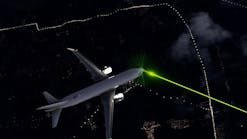Automation, Integration and Virtualization: How Data is Quietly Powering the Global Aviation Sector
As air travel continues to grow, airports must accommodate a staggering surge in travelers. The ACI projects that by 2030, global passenger traffic will shatter the 12 billion mark and skyrocket to an astonishing 19.5 billion by the early 2040s - nearly double this year's global passenger count!
As traffic increases, aviation operations grow more complex, encouraging the world’s airports to lean on advanced technologies to optimize and streamline airport logistics. At the heart of those technologies is data.
Whether enhancing operational efficiency, or improving customer experience, data plays a crucial role in airports and aviation systems. Though often unseen, ultimately, data, along with automation, is at the core of nearly every decision made in the aviation sector. Data quietly serves as a catalyst for innovation across the industry. Let’s take a closer look at some of the key ways data is helping to drive innovation.
Transforming Operational Efficiency Through Data Automation
To handle mounting air traffic and the complex logistics that accompany it, airports are managing increasingly expansive datasets that pull in new information from operations, infrastructure, and sensor networks continuously.
Specialized sensors detect changes in weather, air pressure and runway conditions, and monitor for wildlife nearing the airport. At the same time, airports are working to comply with a variety of regulations, including air traffic control, managing a large, decentralized workforce, maintaining extensive infrastructure, and navigating data privacy concerns.
By leveraging data automation tools that can integrate assets from multiple data sources, airports can reduce manual efforts and enable efficient sharing of critical information across their networks. For example, data automation strategies can facilitate the generation of flight obstacle maps and PDF maps for security, ports, emergency services and help create topographic, cadastral, and basemap databases by retrieving land survey data. When applied strategically, data automation can help organizations harness the full potential of their information to enhance operational efficiency.
Enhancing Customer Experience Using Integration and Real-Time Data
Another challenge airports face is the exponential increase in the volume of data they generate and manage on a daily basis. More passengers means more flights to coordinate, more luggage to route, more tickets to print, and more logistical challenges. Not only are airports processing larger volumes of data than ever before, but this data originates from more data sources and in more and often incompatible forms.
By leveraging real-time data integration, airports can consolidate this information into a coherent framework that significantly enhances the customer experience. For instance, integrating data from various systems, such as flight schedules, passenger flow, and facility management, allows airport authorities to respond effectively in real-time to changing conditions. This responsiveness not only ensures that passengers are well-informed but also improves operational efficiency by optimizing staff and other resource allocation.
Revolutionizing Airport Operations with Digital Twin Technology
As we look to the future of airport operations, some airports are taking data one step further with the adoption of digital modelling to create digital twins. Digital twins are digital replicas of physical entities or systems that can be used to increase situational awareness and enhance the management of airport resources and processes.
This technology allows airport operators to see their entire infrastructure, which increases the understanding of the airport environment, enabling operations teams to make better, faster, data-driven decisions.
Today, this technology is being leveraged in airports like Vancouver International Airport (YVR). YVR developed the first-to-market digital twin of an airport in North America, which integrates extensive data sources, including Geographic Information Systems (GIS), and Light Detection and Ranging (LiDAR). These are being integrated with real-time Application Programming Interfaces (APIs) to facilitate better maintenance tracking and passenger flow management, ultimately streamlining logistics and minimizing bottlenecks.
Digital twins can also be used to generate mobile maps for passengers, incorporating thousands of assets into a unified database to verify data quality and enable digital twins of the airport floorplan.
Improving Air Traffic Safety and Accuracy Through Data Integration
As recent events have made clear, air traffic control and airport operations are critical in both ensuring the safety of passengers and maintaining a consistent traveller experience. In addition to streamlining airport operations, data also plays a crucial role in ensuring aviation safety.
In high-traffic airspace, employing data integration models can enhance safety and efficiency. For instance, air traffic navigation services can leverage data integration workflows to more efficiently manage and update large volumes of aeronautical data, balancing the management of 3D airspaces and updating flight path designs in real time to ensure safe and efficient air traffic operations. As global air traffic increases, these models will become critical to maintaining air traffic control and passenger safety while in the air.
Taking Off Toward the Future
At the core of airport operations lies data. By effectively addressing critical challenges such as efficiency, customer flows, and air traffic safety, data integration tools like FME play a pivotal role in unlocking new possibilities within the industry. Whether through the integration, automation and virtualization or the development of digital twin technology, the future of the sector will be defined by its use of data and how it can be leveraged to drive new innovation.
As we look to the future, the continued advancement of technology and data management strategies will be essential in redefining the global aviation industry, ensuring smoother operations and an improved experience for travelers everywhere.




